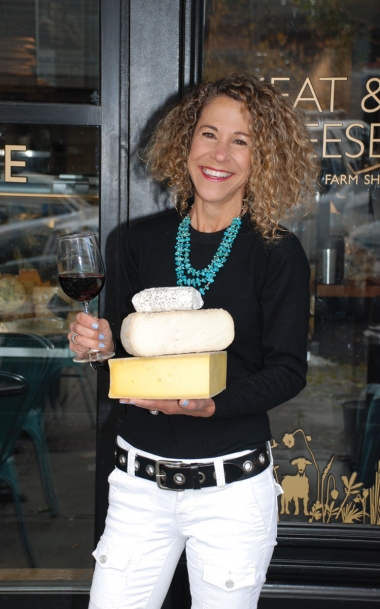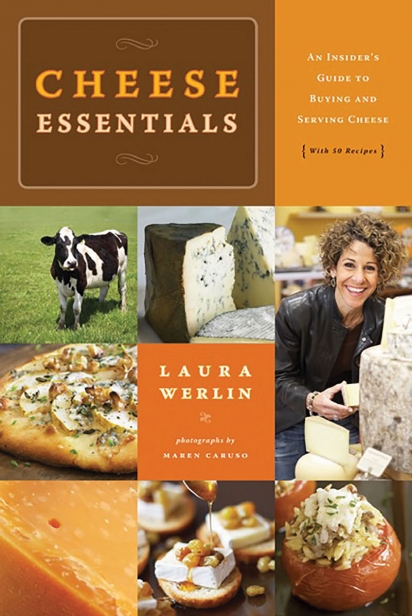Speaking of Cheese with Laura Werlin
Cheese may be a seasonal product, dependent upon the birthing and lactation cycles of dairy livestock, but unlike tomatoes in January it’s always welcome at the table—just ask part-time Aspen resident and renowned cheese expert Laura Werlin.
Whether the James Beard Award– winning author of six books devoted to dairy is conducting classes (she’s a fave at the Food & Wine Classic), judging competitions or appearing on television, Werlin is one of the most recognizable and down-to-earth advocates for cheese consumption, especially when it comes to supporting domestic cheesemakers. Read on for her takes on Colorado cheesemakers and how to get over the fear factor at the cheese counter.
Fueling a Passion
I once heard that if you want to become an expert on a subject, write a book about it. While I didn’t set out to become a cheese expert, that was the unintended result. What I did set out to do was bring attention to cheese, specifically American artisan cheese, which had become my passion. Having the opportunity to meet cheesemakers face to face at my local farmers’ markets only fueled my fascination.
From Milking to Marketing
Since I first began my exploration of American cheese in the late 1990s, there’s been an explosion in domestic cheesemaking, but the cheeses themselves have improved exponentially, as well. Back then, many farmstead cheesemakers milked their animals and made cheese, but they’d never tasted really great cheese. Those cheesemakers that had the money, however, called on consultants to help them improve their product. This was a game-changer and eventually raised the bar on all American artisan cheesemaking.
Another big challenge American cheesemakers faced at the time was that they knew absolutely nothing about marketing, and many of them were resistant to it—which made creating a viable business, with a little-known product, super challenging. American consumers didn’t know anything about domestic artisan cheese, but they had a built-in bias against it. Ironically, this was coupled with a built-in bias toward imported cheese. The cheesemakers that succeeded usually had the resources to learn how to make better cheese and/or an innate knack for doing so— and they knew how to market it.
Be Brave
I think there are a few reasons people are intimidated by cheese—even I get intimidated sometimes! Looking at a case full of cheeses is like trying to read a foreign language, like walking into a wine shop if you don’t know much about wine (or even if you do). I recommend keeping a cheese diary and writing down the names of the cheeses you’ve enjoyed. You might also think about what you liked about it: Was it buttery? Salty? Creamy? Hard? Even knowing a few characteristics can provide essential information to your cheese retailer or cheesemonger.
Local Cheese Scene
Luckily, we have quite a few options in the Roaring Fork Valley including Whole Foods, Murray’s at City Market in Aspen and El Jebel, and Meat & Cheese. You can ask for tastes at all these places—that’s the best way to get educated. Colorado cheesemakers have proliferated, and there are some good ones. James Ranch farmstead cow milk cheeses from Durango; Haystack Mountain goat and cow cheeses from Longmont; Fruition Farm’s farmstead sheep milk cheeses, owned by Denver chef Alex Seidel and made by Jimmy Warren; Fort Collins’s MouCo Cheese Company’s soft, creamy cow milk cheeses; Moon Hill Dairy’s extraordinary cow milk cheese; and, of course, Aspen’s hometown goat-cheese-making hero, Avalanche Cheese Company.
Diversity is Key
When making a cheese plate, include cheeses from different milk sources (cow, sheep, goat, buffalo milk), but also different textures. We eat with our eyes, and having such a diverse grouping of cheese is very enticing visually. In addition to the cheeses themselves, think about accompaniments that not only pair with the individual cheeses but also the beverage(s) that are being served. If you love honey with blue cheese, a dry wine like Cabernet Sauvignon is going to taste terrible. That same combination would be great as an after-dinner cheese course served with a sweet wine like Sauternes, however.
Pre-meal accompaniments are a bit more savory in nature— olives, charcuterie, mostarda, or roasted vegetables like asparagus or green beans that you can pick up with your hands. I’d serve both bread and crackers—just be sure that neither has strong added flavorings like onion or garlic, as they’ll mask the flavors in the cheeses.
Learn more about Laura’s books and upcoming classes at LauraWerlin.com.






